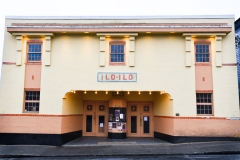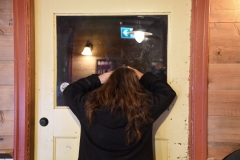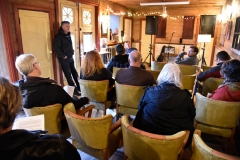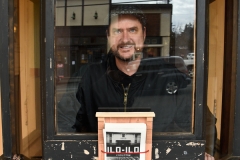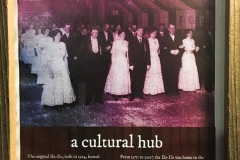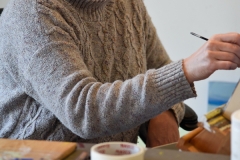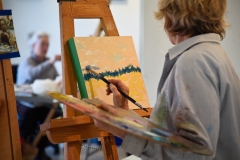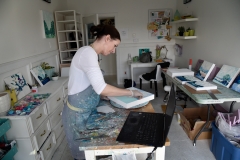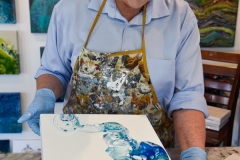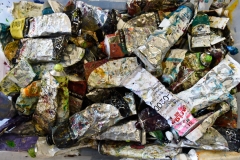Courtenay City Council’s annual appointments announced after a short delay

Cannabis breeding and genetics centre creates three new strains for Aurora Cannabis
Photo Caption
Cannabis breeding and genetics centre creates three new strains for Aurora Cannabis
When Decafnation last reported on the Cannabis Innovation Centre in the spring of 2019, construction of the 32,200 square foot facility had just gotten underway and its ownership was in transition from Jon Page’s original Anandia Labs to the publicly-traded company Aurora Cannabis.
Since then, the pioneering breeding and genetics program at the centre, led by Greg Baute, PhD, got underway in February 2020 with a team of seven scientists and a dozen cultivation and operational personnel. Their early work has already culminated in the creation of three new cannabis cultivars that Aurora will release to consumers this month.
Aurora held a virtual media event this week to introduce the trio of unique cultivars — Stonefruit Sunset, Lemon Rocket and Driftwood Diesel — which have attracted widespread interest within the cannabis community. They are being marketed under the brand name, San Rafael.
They are the first of many new cultivars that Baute expects to breed on a regular basis.
The term ‘cultivar’ is short for cultivated variety and refers to a plant propagated for its desirable characteristics, such as THC or CBD content or aroma. They are commonly referred to as strains.
READ MORE: Vanier grad builds cannabis science hub in Comox
READ MORE: CIC Director Greg Baute hopes to redefine cannabis breeding
But the event also offered a first look inside the finished centre, now renamed Aurora Coast. A short video played at the media event showed Aurora Coast’s large expanse of cannabis plants stretched out across the 21,700 square foot greenhouse and illuminated by endless banks of LED lights and complex irrigation systems.
Aurora Coast exists in the Comox Valley because the breeding and genetics centre is the brainchild of G.P. Vanier grad Jon Page, PhD, who in 2009 became the first scientist in the world to sequence the 30,000 genes in the cannabis genome.
Jon and his twin brother Nick, who is now the general manager of the Aurora Coast facility, grew up on Headquarters Road and attended Tsolum Elementary and Vanier High School. Jon earned his PhD in Botany at UBC and in 2013 co-founded Anandia Labs in Vancouver as a cannabis testing and research laboratory.
But Page envisioned a larger facility for the pure science of discovering how the cannabis plant works, its breeding and genetics, and how to improve it as a commercial product. He had acquired the land near the Comox Airport and began building what he originally called the Anandia Cannabis Innovation Centre.
Then, in early 2019, Aurora Cannabis acquired Anandia for about $115 million in stock. Jon Page was initially Aurora’s chief scientist and now is a senior science advisor for the company founded in Edmonton.
READ MORE: Cannabis Innovation Centre construction underway
WHAT IS A CULTIVAR?
The word cultivar means a cultivated variety; thus, a cultivar is selected and cultivated by humans. Although some cultivars can occur in nature as plant mutations, most cultivars are developed by plant breeders and are called hybrids.
A first-generation hybrid occurs when a breeder selects two pure lines (plants that would produce identical offspring when self-pollinated) and cross-pollinates them to produce a new plant that combines desirable characteristics from both parents. One major thing to remember is if new plants are grown from the seeds of a cultivar, rarely, if ever, do the new plants develop true-to-seed. True-to-seed simply means the offspring is genetically the same as the parent. To cultivate a true-to-seed type offspring (a clone) from cultivars, one would have to be vegetatively grown, such as from cuttings, grafting, or tissue cultures.
— Yard and Garden
SUBSCRIBE TO OUR NEWSLETTER
Courtenay Council announces its regional district line-up and other appointments
A few random items as the 2022 election comes to a close
Long-time public official Bronco Moncrief dies, Manno Theos hangs out in Greece, and Daniel Arbour reacts to lies about his campaign finances
Decafnation candidate voting sheet
A list of candidates endorsed by Decafnation
Join the discussion Oct. 3 about food system security in the Comox Valley
The Watershed Sentinel magazine is hosting a zoom webinar Oct. 3 on food system security in the Comox Valley
THE WEEK: Busting the myth that council members come with a blank slate
The Old Guard faction of Comox Valley political activists has been trying for decades to create a cohesive voting block
Three candidate forums for Oct. 15 Comox Valley elections
See and hear the candidates in person for this fall’s municipal elections. We list the three candidate forums
The Mack Laing Trust: BC Supreme Court hears arguments in 40-year case
Mack Laing Heritage Society says the Town of Comox is in a rush to clean up a mess of its own making, while town and Attorney General lawyers call The Society’s evidence “irrelevant.”
Comox Valley Nature webinar to discuss effect of climate change on marine life
Comox Valley Nature lecture to discuss how this summer’s heatwave killed off billions of sea life and the future for marine ecosystems
New North Island organics processing facility raises concerns about cost, fire and odours
Campbell River environmentalists raise concerns about the the cost and location of the Comox Strathcona Waste Management Commission’s new organics processing facility
Cannabis breeding and genetics centre creates three new strains for Aurora Cannabis
The Cannabis Innovation Centre in Comox, founded by Vanier grad Jon Page and now called Aurora Coast, has produced its first new strains of cannabis and will release them to consumers later this month

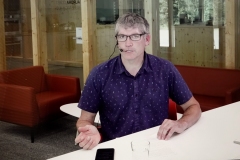
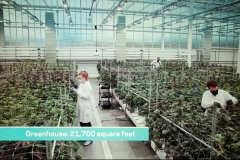


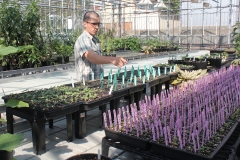

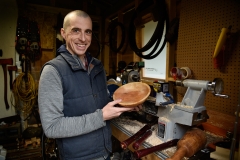
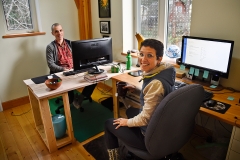


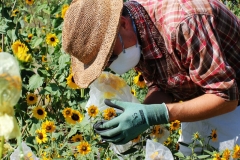
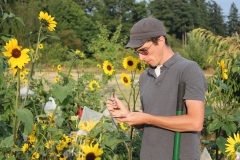

 “The goal of the books was, first of all, to save our stories,” Wilde told Decafnation. “But they also document a generation that represents a big shift in culture.”
“The goal of the books was, first of all, to save our stories,” Wilde told Decafnation. “But they also document a generation that represents a big shift in culture.”
 Brad Morgan — The Library Book by Susan Orlean — This is every bookworm’s dream read, said a reviewer and it’s true. If you love books, you’ll love this book. It’s actually a tribute to libraries via an arson investigation and filled with real-life characters and stories so unexpected, they feel like they’ve been misshelved from the fantasy section. It’s starts out about the 1986 fire that destroyed 400,000 books at the Los Angeles Central Library, and that becomes Orlean’s excuse to introduce the eccentric who’d been the city’s first librarian, a successor who walked from Ohio to L.A. to claim the post.
Brad Morgan — The Library Book by Susan Orlean — This is every bookworm’s dream read, said a reviewer and it’s true. If you love books, you’ll love this book. It’s actually a tribute to libraries via an arson investigation and filled with real-life characters and stories so unexpected, they feel like they’ve been misshelved from the fantasy section. It’s starts out about the 1986 fire that destroyed 400,000 books at the Los Angeles Central Library, and that becomes Orlean’s excuse to introduce the eccentric who’d been the city’s first librarian, a successor who walked from Ohio to L.A. to claim the post. Ramon Martinez — Riding the Continent by Hamilton Mack Laing, with an introduction by Richard Mackie, edited by Trevor Marc Hughes — Hamilton Mack Laing was an illustrious early British Columbia writer and naturalist. But few know him as how he described himself in his mid-thirties: a motorcycle-naturalist. For several years beginning in 1914, Laing used the motorcycle to access the natural world, believing it gave him a distinct advantage over other forms of transportation. During this period in his life he would take on a transcontinental journey, riding across the United States from Brooklyn to Oakland in 1915. His previously unpublished manuscript of this journey has been hidden away for nearly a century.
Ramon Martinez — Riding the Continent by Hamilton Mack Laing, with an introduction by Richard Mackie, edited by Trevor Marc Hughes — Hamilton Mack Laing was an illustrious early British Columbia writer and naturalist. But few know him as how he described himself in his mid-thirties: a motorcycle-naturalist. For several years beginning in 1914, Laing used the motorcycle to access the natural world, believing it gave him a distinct advantage over other forms of transportation. During this period in his life he would take on a transcontinental journey, riding across the United States from Brooklyn to Oakland in 1915. His previously unpublished manuscript of this journey has been hidden away for nearly a century. Gloria J. Balazs — Becoming by Michelle Obama — A great book. Predictable, but warmly entertaining. Loved it!
Gloria J. Balazs — Becoming by Michelle Obama — A great book. Predictable, but warmly entertaining. Loved it!


